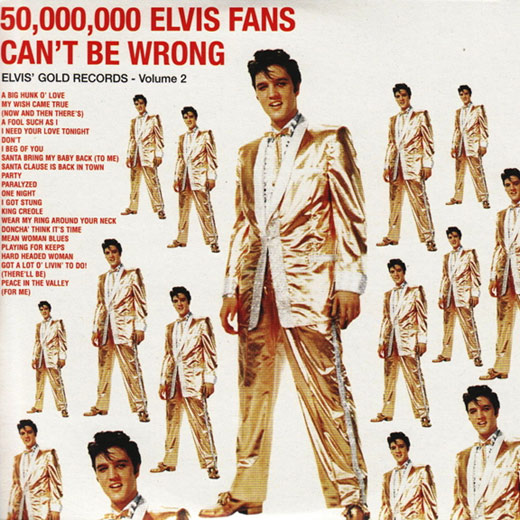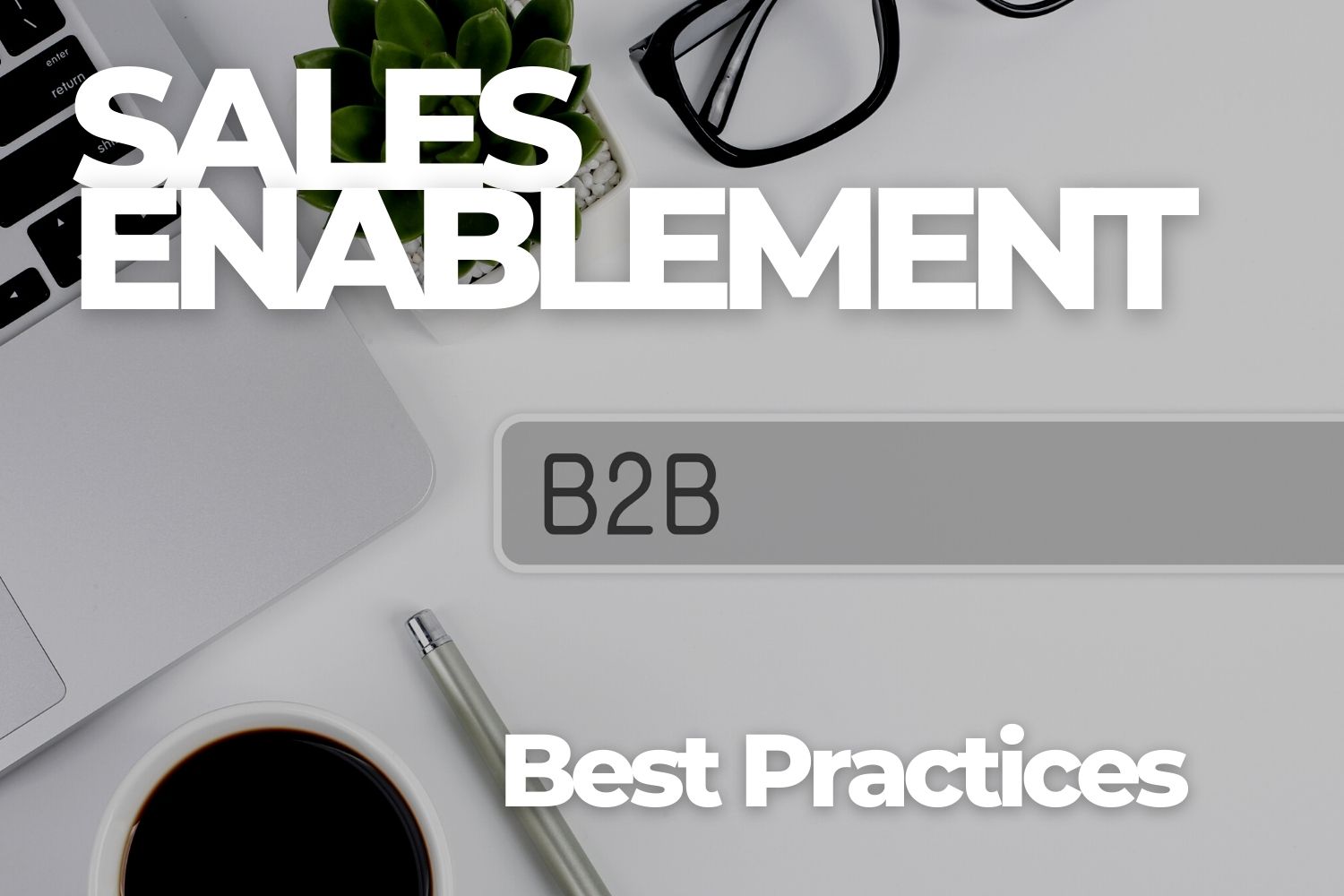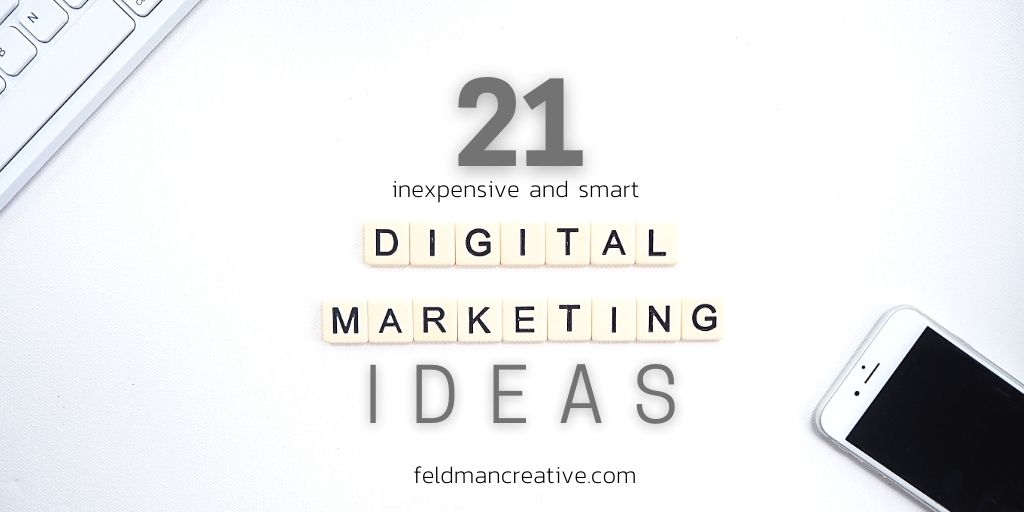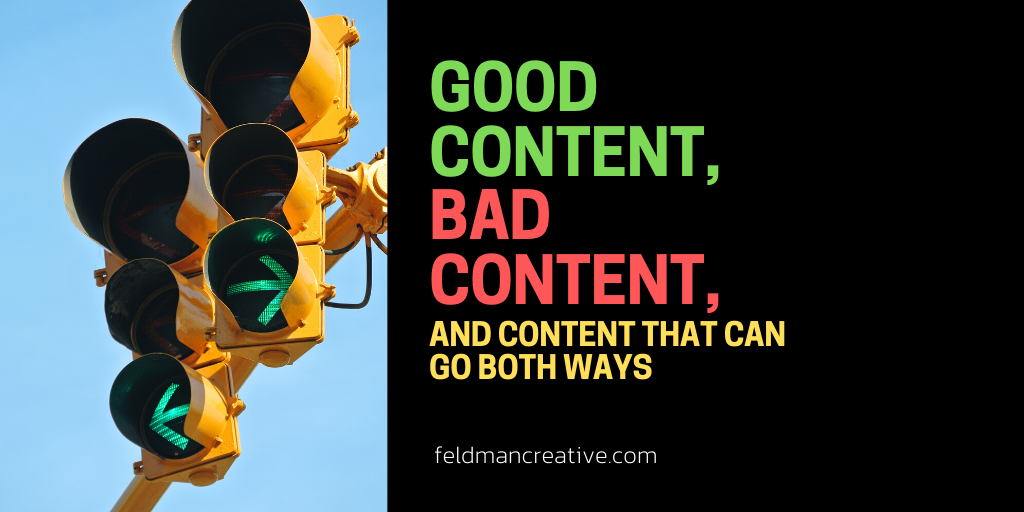The happiest place on earth is a zoo. Actually, it’s a theme park. Disneyland, right? It has mice and ducks and all kinds of animals running around, but they’re uncaged. I call it a zoo because it’s crowded.
The crowds don’t keep you away though, do they? In fact, they have the opposite effect.
Same goes for a restaurant. You peer into an empty one and quickly conclude the food must suck. The one next door has a waiting list and gads of people out front anxiously waiting to be summoned by their little buzzer. Must be the tastier of the two.
Psychologists, sociologists and new media marketingologists call this powerful dynamic “social proof.” Most of us less scientific sheeps don’t call it anything. We simply choose to follow the crowd.
50,000,000 Elvis Fans
RCA Victor released the hits collection “50,000,000 Elvis Fans Can’t Be Wrong” in 1959. The record went platinum. Though 50-million record buyers had previously demonstrated their love for the king, the record company knew millions more had yet to do the Elvis dance.
The title they gave the album is classic social proof. How could you go wrong investing in Elvis’ brand of rock and roll when 50-million had already done so?
5 Types of Social Proof
“Think of it as building the foundation for massively scalable word-of-mouth.”
Those are the words of venture capitalist and blogger Aileen Lee, as she explains how generating and sharing social proof through social networks can multiply the discovery of your brand and add to its influence. Then, in “Social Proof is the New Marketing,” Lee goes on to explain five forms of social proof weighing in big the web.
- Expert social proof – A credible expert such as a prominent blogger, business leader or voice of authority in an industry has influence. For example, if a popular food blogger were to recommend an ingredient by brand, the brand is likely to enjoy increased sales (and almost certain to feature the endorsement on their website).
- Celebrity social proof – Celebrity endorsements are a staple of advertising and can be parlayed to great effect online. According to Lee’s article (circa 2011), an endorsement by Jessica Simpson and aesthetician Nerida Joy helped Beautymint attract 500,000 visitors on day one of its launch.
- User social proof – Digital marketers are wise to share user success stories. In addition to traditional case studies, a huge number of companies invite users to create videos about their use of products and services.
- Wisdom of the crowd – This simple formula speaks to the popularity of a product. The “X billions served” found on every golden arches sign might be the most famous of all examples. On a smaller scale, a “most popular posts,” “most popular tunes,” “most popular menu items,” or the like, tend to perpetuate higher consumption.
- Wisdom of friends – It’s “the killer app of social proof in terms of 1:1 impact,” writes Lee.
10 Effective Social Proof Strategies
1. Testimonials
The power of testimonials lies in their objectivity. That is, someone outside of the brand does the talking, so in theory, the credibility is higher.
My family had a great time whitewater rafting this past weekend and as we were saying goodbye to our guides they asked us to share our thoughts on Yelp. Though I read Yelp pages now and then, I’ve never contributed, but I felt strong enough to create an account and give Mariah Rafting a testimonial. It’s the real deal. You can even send me a message from Yelp if you want know more about my experience.
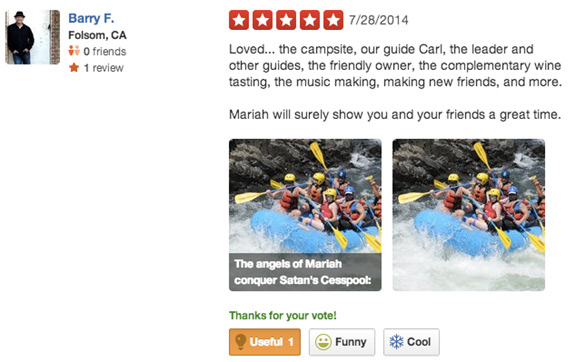
If your company collects testimonials, sprinkle them throughout your website on the pages you know will be seen often. I like to include testimonials on the pages of my website where I offer eBook downloads and subscriber-only access to webinars. A plug from someone who says they learned valuable lessons from my content can help persuade a visitor who’s not sure whether or not to complete the form.

Bonus points: for even greater credibility, include real attributions and photos, when possible. Double bonus points for video testimonials.
2. Ratings and Reviews
Customer reviews can be immensely powerful. When’s the last time you made a meaningful purchase on Amazon or any e-tailer without glancing at the reviews?
While ratings and reviews often go hand-in-hand with testimonials, it’s the scoring systems I’m endorsing here—usually a 5-star system—as a source of social proof.
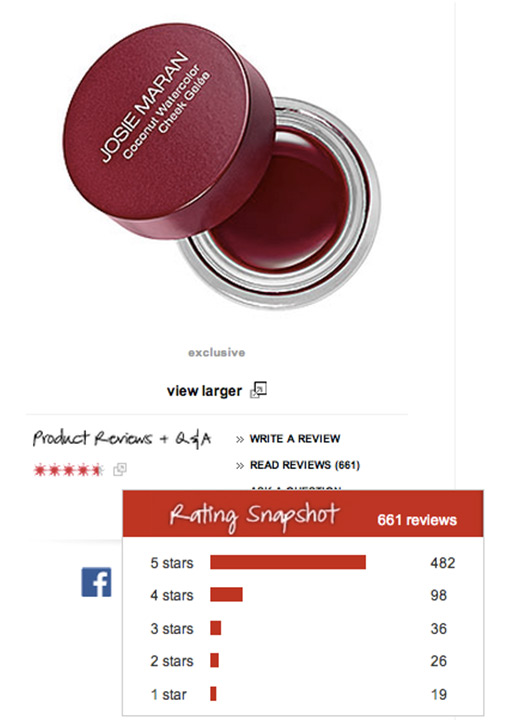
Product and service reviews become particularly powerful when the opinions of larger populations are accounted for. Sephora, an online seller of beauty products, collects and displays product scores such as the one above where 661 customers have spoke up.
3. Influencer Endorsements
“The more relevant and influential the endorser, the more powerful the social proof,” wrote Andy Crestodina in “The Psychology of Social Proof & How to Build Trust in Your Business,” on the Unbounce blog.
Andy continues, “If your business has ever received a compliment from a well-known person who is respected by your audience, go find it, and add it to your home page.”

Influencer endorsements are seen on the covers, jackets and opening pages of nearly every book. Newly published author Chris Ducker features an endorsement from best-selling author Jay Baer on the website for his book“Virtual Freedom.”
4. Badges
This form of social proof goes by different names: badges, seals, certifications, etc. Call them what you will, but you’ll recognize the popular approach to establishing credibility, which is usually as simple as displaying meaningful icons.
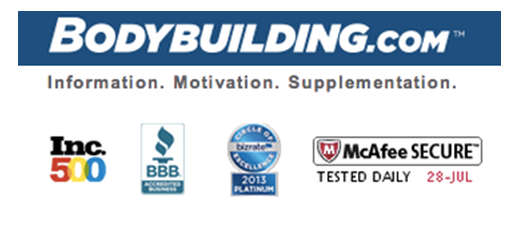
In the footer of the BodyBuilding.com website, the company displays a variety of badges demonstrating media recognition, BBB accreditation, an excellence award and website security. These are just a few of the types of badges you can display to boost credibility with potential new customers.
5. Media Logos
The “as seen in” media showcase is a classic example of social proof. Manufacturers often cite and/or show the news media that has featured, reviewed or mentioned their products. Emerging entertainers do the same.
Writers, photographers and all types of artists look for opportunities to show you the coverage they’ve earned from the media. As a blogger, I feature the logos of many of the popular online brands that have published my articles.

GeoPalz worked hard to get “ibitz,” their wireless pedometers for kids and families, featured in a long list of reputable publications, so they proudly display logos of publishers you’re bound to recognize.
6. Subscriber Counts
Again, people feel comfortable joining the crowd. When you can make a numbers play, I recommend putting social proof to work when asking for a subscription via some form of opt-in, including your email list.
Your call to action might mention joining is free and easy. And you could up your persuasiveness by mentioning the benefits of subscribing. But if you have a sizable list, don’t miss the opportunity to tell people about it.
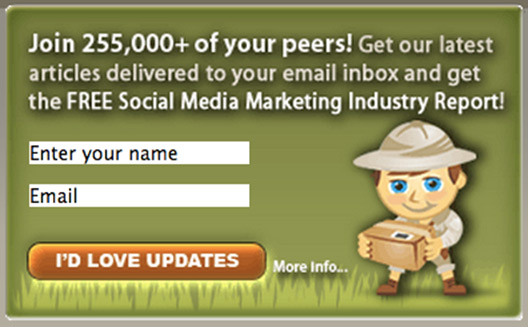
Social Media Examiner doesn’t hesitate to tell you about their gigantic mailing list. Seems like a good idea to read what more than 255K of your peers are reading, right?
Andy Crestodina (Orbit Media) told me (and a roomful of others) how the “join X others” has increased his company’s subscriber conversion rate by 1400%. (Now there’s serious proof of the value of social proof.)
7. Social Connections
All kinds of website widgets or plugins will enable you to play the numbers game with your social network connections. Here’s an example of HubSpot employing this simple strategy.

Many widgets showcase even more, such as your media likes, follows, and so forth.
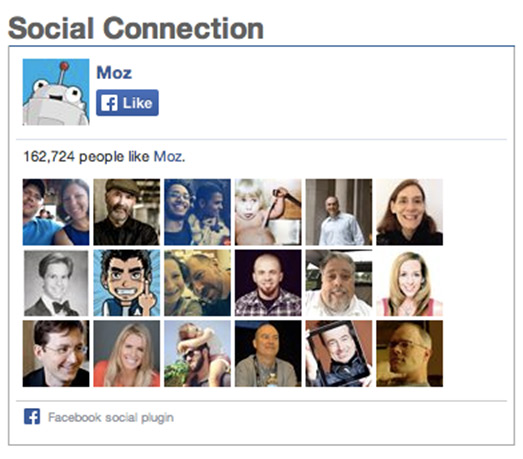
The Facebook social plugin used on the Moz blog showcases the “like” count as well as profile pictures of people in my Facebook network (which makes it more compelling to “like along”).
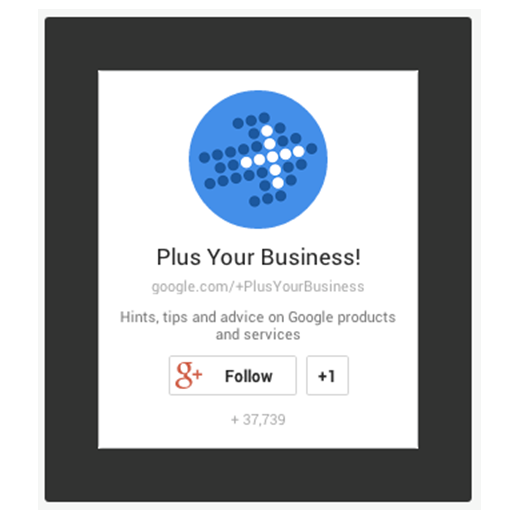
37,739… That’s a lot of pluses. This feature in the sidebar of the Plus Your Business! website makes a compelling case for joining the Google+ community offered here.
Other plugins are often used to display recent posts and updates on the leading social networks, which serve to show the community is active and useful.
Deciding whether or not to turn on the counters in your social share plugin can sometimes be a tough call. A series of 0’s and 1’s are likely to suggest the blog post or page is not share-worthy. However, I’ve found even single digit numbers tend to get the ball rolling and encourages sharing activity.

Of course, well-established bloggers won’t hesitate to turn on the counters and enjoy the social proof that comes with big share numbers. This sample share bar comes from LinkedIn’s Pulse blog, which also provides counts for views, likes and comments.
9. Clients
However crude it may be, “logo porn” has become the nickname given to the popular website tactic of displaying client logos. The strategy, of course, establishes credibility for the company, allowing the host to show it has big, relevant, exciting, or lots of clients.

Many different styles are used to showcase clients for social proof including grids, lists, sliders, and so forth. This four-pack of financial companies is just the first slide from the financial page of Salesforce.com. A nice touch here: when you click on any company, the interactive slider then displays a testimonial from one of the company’s leaders.
10. Test Results
Various types of test results or data collected by an independent source can be powerful social proof for delivering the comfort buyers seek. A great example, shown below, is the “Trusted Store” card from Google. The certification is based on numerous data points, which provide reference points for comparing the criteria shoppers want to know in advance of making a purchase.
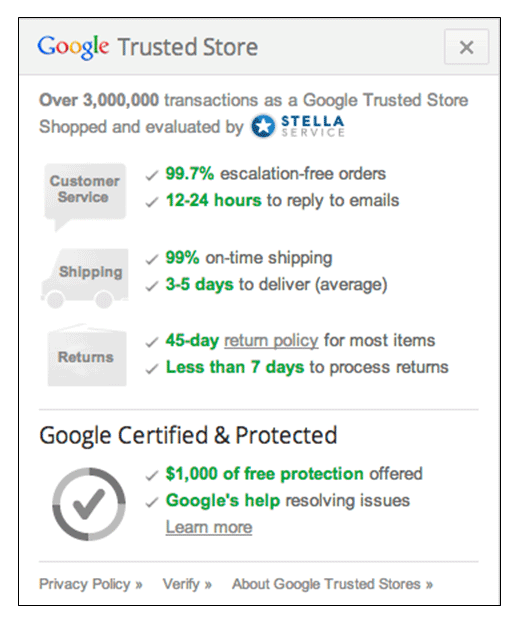
Social Proof Equals Sway
In the book, “Influence,” Robert Cialdini describes social proof as “the tendency to see an action as more appropriate when others are doing it.” Cialdini claims social proof is more powerful when we’re uncertain what to do.
You can be certain uncertainty is forever prevalent in the mind of your prospects. They’ll question what to read, watch, listen to, wear, eat, try and buy. Who can they trust?
If you want to elevate your sway, develop strategies to put social proof to work in your online communications.



